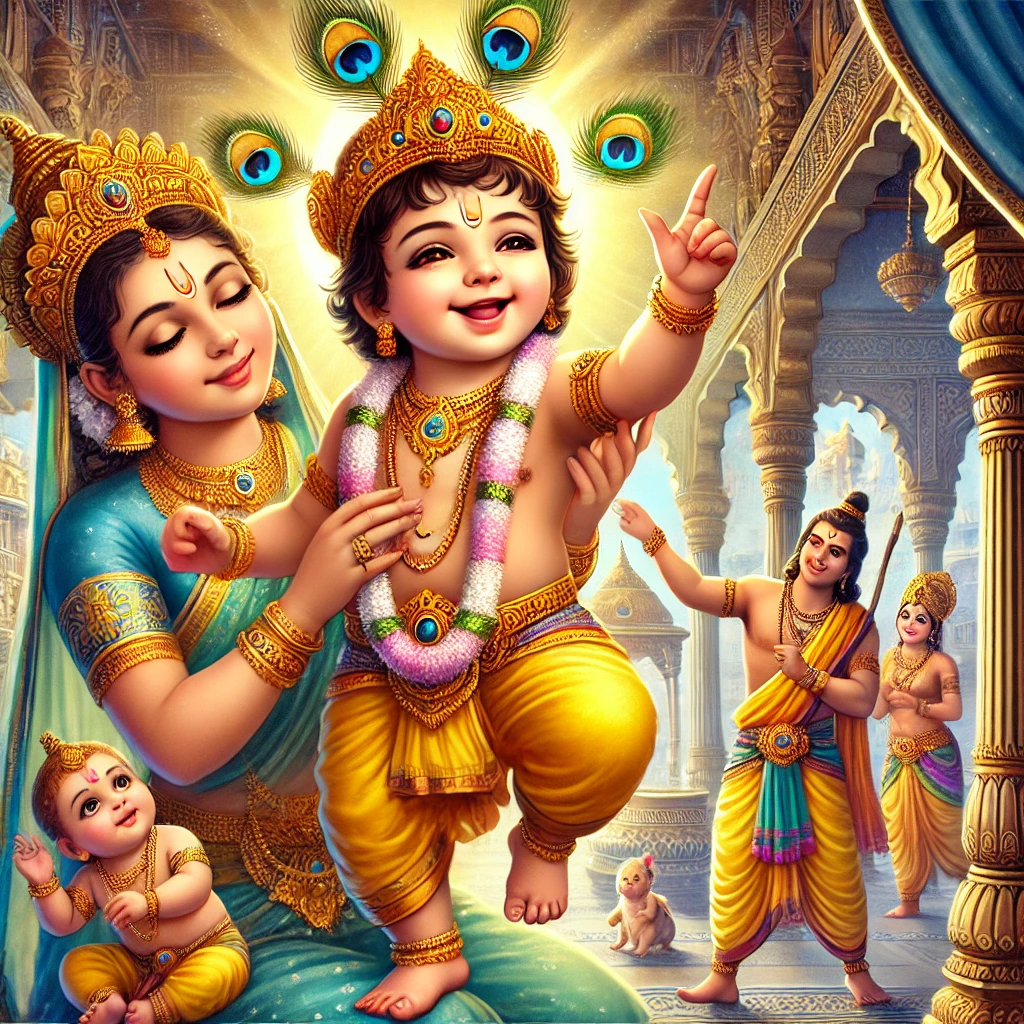Introduction
The Ramcharitmanas, written by the revered poet-saint Goswami Tulsidas, is one of the most celebrated Hindu scriptures. It narrates the divine story of Lord Rama in Awadhi language and is considered an essential text in Hinduism. The Bal Kand (Book of Childhood) is the first and longest section of the Ramcharitmanas, detailing the events leading up to and following Lord Rama’s birth.
In this blog, we will explore Section 2 of Bal Kand, which describes key divine interventions, the prayers of sages, and the preparations in heaven and on earth for the advent of Lord Vishnu as Shri Rama.
Summary of Ramcharitmanas Bal Kand Section 2
This section of Bal Kand focuses on:
- The sufferings of the gods under Ravana’s tyranny
- The intervention of Lord Vishnu
- King Dasharatha’s despair over his lack of children
- The divine blessings leading to Rama’s birth
Let’s explore these events in detail.
1. The Gods Seek Refuge in Lord Vishnu
The second section of Bal Kand begins with a vivid description of the growing cruelty of Ravana, the demon king of Lanka. Due to his immense power, Ravana had conquered the three worlds (Swarga, Prithvi, and Patala) and was harassing sages, saints, and celestial beings.
The Devas (gods), unable to bear his tyranny, approached Lord Vishnu in Kshirsagar (the cosmic ocean of milk). They pleaded for divine intervention to restore righteousness (Dharma) on earth.
Key Verses & Meaning:
“Nisichar hi nidhana karehu manuja tana dhari…”
(O Lord Vishnu, incarnate as a human and destroy the demons.)
Lord Vishnu assures the Devas that he will take birth as the son of King Dasharatha in Ayodhya to annihilate Ravana and uphold Dharma.
2. King Dasharatha’s Grief and His Desire for a Child
Meanwhile, in Ayodhya, King Dasharatha and his queens—Kaushalya, Kaikeyi, and Sumitra—were deeply sorrowful as they remained childless despite years of prayers and rituals.
This section beautifully portrays Dasharatha’s emotional turmoil, his feelings of despair, and his strong desire for a successor to continue the Ikshvaku dynasty.
Key Themes:
- The importance of a child in royal lineage
- Dasharatha’s piety and devotion
- His unwavering faith in divine will
To seek a solution, Dasharatha consults Sage Vashistha, his royal guru, who advises him to perform the Putrakameshti Yajna—a sacred fire ritual that invokes divine blessings for offspring.
3. Sage Rishyasringa and the Putrakameshti Yajna
Sage Rishyasringa, a powerful ascetic known for his ability to bring prosperity and rainfall, is invited to conduct the Putrakameshti Yajna.
The yajna is performed with full devotion, and as a result, Lord Agni (the Fire God) appears from the sacrificial fire, carrying a golden vessel filled with divine kheer (sweet pudding).
Key Verse:
“Pragate agni kari kshana bhasma, diya charu kahu raghupati dasa”
(Agni Dev appeared and handed over the sacred kheer to the king.)
The kheer is distributed among Dasharatha’s three queens, leading to the miraculous conception of four divine sons—Rama, Bharata, Lakshmana, and Shatrughna.
4. The Cosmic Significance of Lord Rama’s Birth
The entire universe rejoices as preparations begin for Lord Vishnu’s incarnation. The celestial beings, sages, and deities celebrate, as righteousness (Dharma) is about to be restored on earth.
This momentous occasion signifies:
- The divine plan to eliminate Adharma (unrighteousness)
- The importance of Lord Vishnu’s avatar to protect devotees
- The universal joy of Lord Rama’s arrival
Spiritual Lessons from Bal Kand Section 2
- Faith in Divine Will: The gods had unwavering faith in Lord Vishnu’s promise, teaching us the power of patience and devotion.
- Power of Yajnas and Devotion: King Dasharatha’s Putrakameshti Yajna shows that sincere devotion and prayers bring divine blessings.
- Righteousness Always Prevails: Despite Ravana’s tyranny, the Devas never lost hope, reaffirming that Dharma always triumphs over evil.
Conclusion
Section 2 of Bal Kand in Ramcharitmanas beautifully sets the stage for Lord Rama’s divine birth. It highlights the cosmic balance, the necessity of Lord Vishnu’s incarnation, and the spiritual significance of Dharma.
For devotees, this part of Ramcharitmanas serves as an inspiration to uphold righteousness, trust in divine timing, and seek blessings through unwavering devotion.
Stay tuned for the next sections of Bal Kand, where we will explore the divine birth and childhood of Lord Rama!
Frequently Asked Questions (FAQs)
Q1. What is the main theme of Bal Kand Section 2?
Ans: It describes the suffering of the Devas under Ravana, King Dasharatha’s longing for a child, and the divine preparations for Lord Vishnu’s incarnation.
Q2. Why did Lord Vishnu decide to take human form as Rama?
Ans: To destroy Ravana and restore Dharma on earth, as demons like Ravana could not be killed by divine beings due to a boon from Lord Brahma.
Q3. What was the role of Sage Rishyasringa?
Ans: He conducted the Putrakameshti Yajna, which led to the birth of Rama and his brothers.
Q4. What is the spiritual significance of this section?
Ans: It teaches us faith in divine will, patience, and the importance of prayers and devotion.
Would you like me to continue with the next sections of Bal Kand? Let me know in the comments!

Leave a Reply